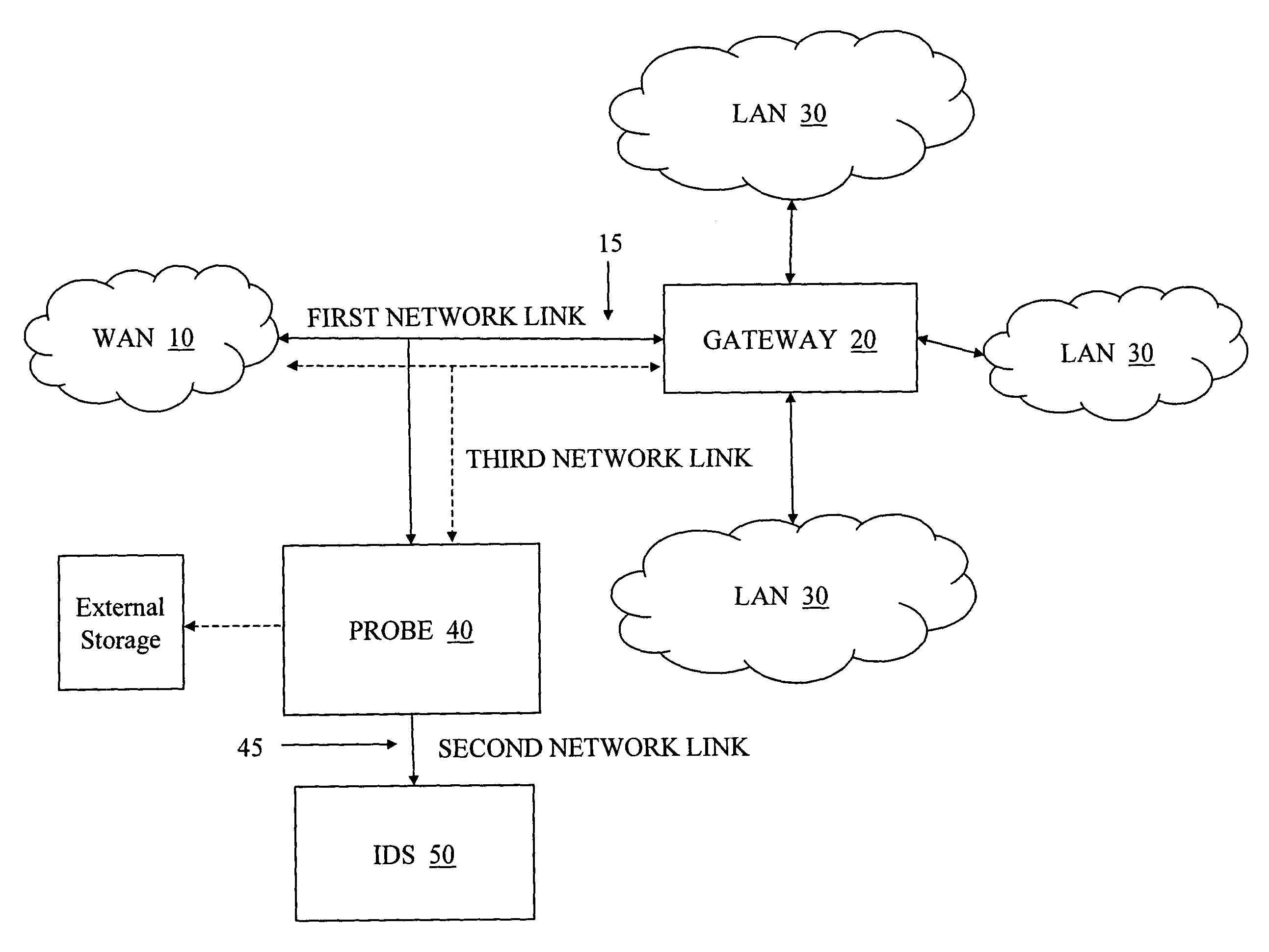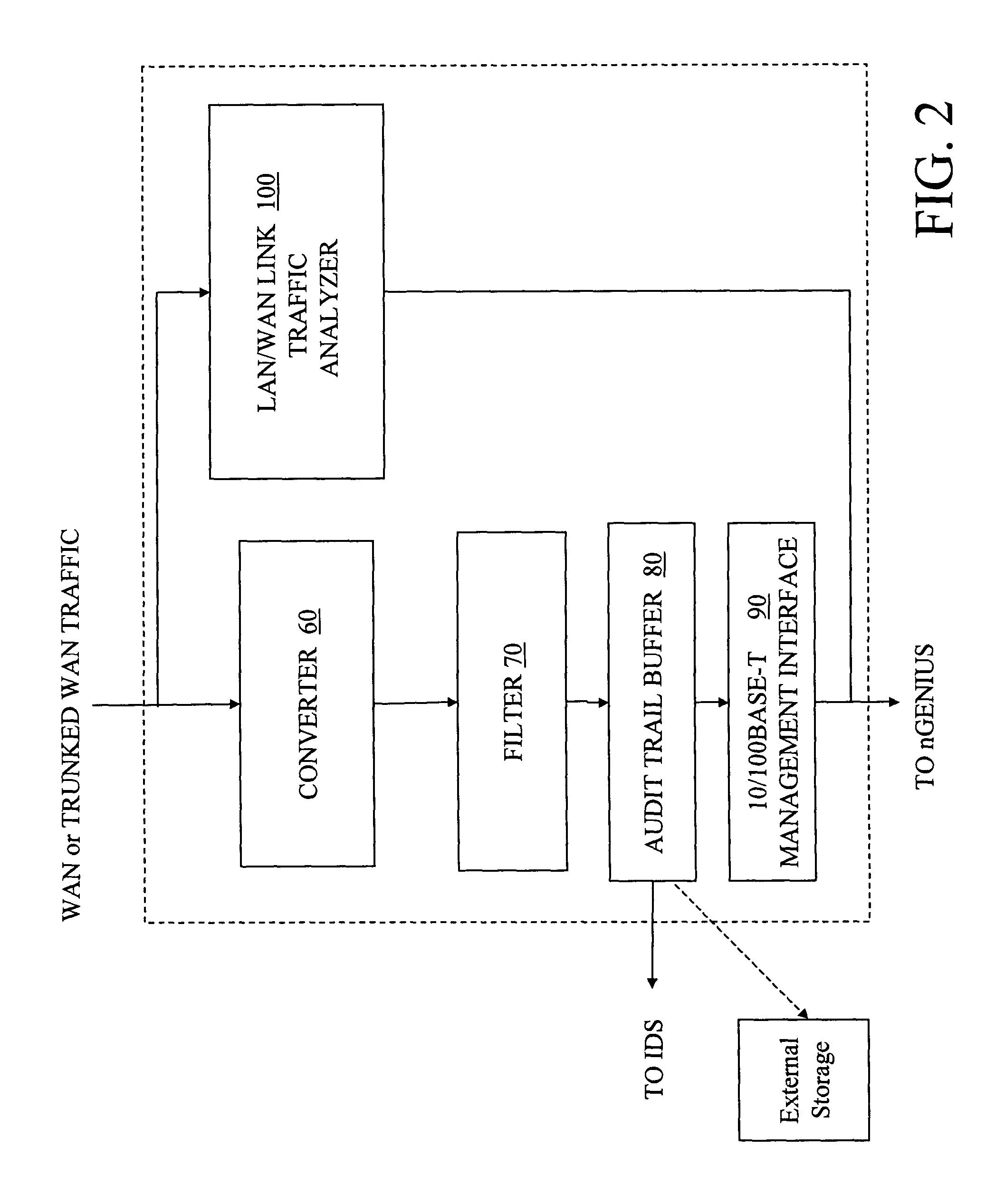Intrusion detection system and network flow director method
a network flow director and intrusion detection technology, applied in the field of computer networks, can solve the problem of low user confidence in the ids, and achieve the effect of facilitating further tracing and analysis
- Summary
- Abstract
- Description
- Claims
- Application Information
AI Technical Summary
Benefits of technology
Problems solved by technology
Method used
Image
Examples
Embodiment Construction
[0029]As shown in the drawings for the purposes of illustration, the invention may be embodied in a system and method for network intrusion detection that receive, convert, and filter data packets. The data packets are monitored to ascertain network performance. Performance outside of expected norms can be indicative of an intrusion, and a system according to the invention preserves the associated network traffic and context for further analysis.
[0030]With reference to the exemplary embodiment illustrated in FIG. 1, a WAN 10 is in communication over a LAN / WAN link 15 with a gateway 20 that connects one or more LAN segments 30. The WAN 10 can be a public or private wide area network, and in one embodiment the WAN 10 is part of or connected to the Internet. The LAN / WAN link 15, for example, can include (but is not limited to) network topologies such as HSSI, T1 / E1, ATM, Frame-DS3, Packet-over-Sonet / SDH, 10G Ethernet, ATM / POS OC-192, and encapsulated traffic such as MPLS. The gateway 2...
PUM
 Login to View More
Login to View More Abstract
Description
Claims
Application Information
 Login to View More
Login to View More - R&D
- Intellectual Property
- Life Sciences
- Materials
- Tech Scout
- Unparalleled Data Quality
- Higher Quality Content
- 60% Fewer Hallucinations
Browse by: Latest US Patents, China's latest patents, Technical Efficacy Thesaurus, Application Domain, Technology Topic, Popular Technical Reports.
© 2025 PatSnap. All rights reserved.Legal|Privacy policy|Modern Slavery Act Transparency Statement|Sitemap|About US| Contact US: help@patsnap.com



